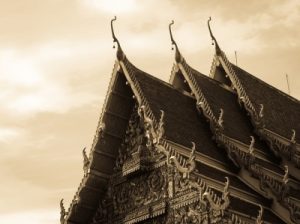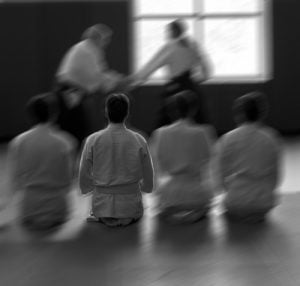The Jinenkan is the third main type of ninjutsu. It is a kobudo organization. If you break down the Japanese word kobudo, the “bu” part refers to military or war. “Budo” means military or martial way, and when you put it together with “ko,” which means ancient or old, you get a word that basically means something like “ancient stop fighting way,” or self defense based on ancient methods. “Jinenkan” means “hall of nature.”
What is taught in Jinenkan was used in battles in Japan as long ago as 1000 CE. The techniques were honed over centuries, as was a teaching method for taking a novice in martial arts to mastery level. It is a very structured method of teaching handed down from teacher to student.
The emphasis in Jinenkan is on natural movements and on appreciation of the strength to be found in nature and the environment. Jinenkan is one organization teaching Takamatsu-den martial arts. Founded in 1996 by headmaster Mananka Unsui, who has over 40 years of training in ancient Japanese martial arts, the Jinenkan teaches the following techniques:
1. Taijutsu – unarmed fighting skills
2. Bikenjutsu – sword arts
3. Yari – spear arts
4. Naginata – halberd, which is a two-handled pole weapon
5. Tessen – iron fan
6. Jutte – truncheon
7. Kusari-fundo – weighted chain
8. Tantojutsu – knife
And many more! All Jinenkan training is done according to the Densho, which is a written and drawn book or scroll which includes teaching and knowledge and which was used to pass down traditions to future generations.
In Jinenkan, promotions are based on a simple belt system. New students begin with a mukyu, or white level, signifying that he has “no level” (yet). Next is the sankyu, or green belt, then nikyu, or purple belt, then the ikkyu, or brown belt, and after that, the student moves on to the dan ranks, or black belt levels.
A student who achieves shodan, or a first degree black belt has earned the right to wear the hakama, or the long, pleated, wide-legged pants worn by samurai. As the degrees of black belt increase, the number of students attaining them goes way down. For example, there are only a few students in the entire world who have achieved yondon, or a fourth degree black belt.
Joyce




